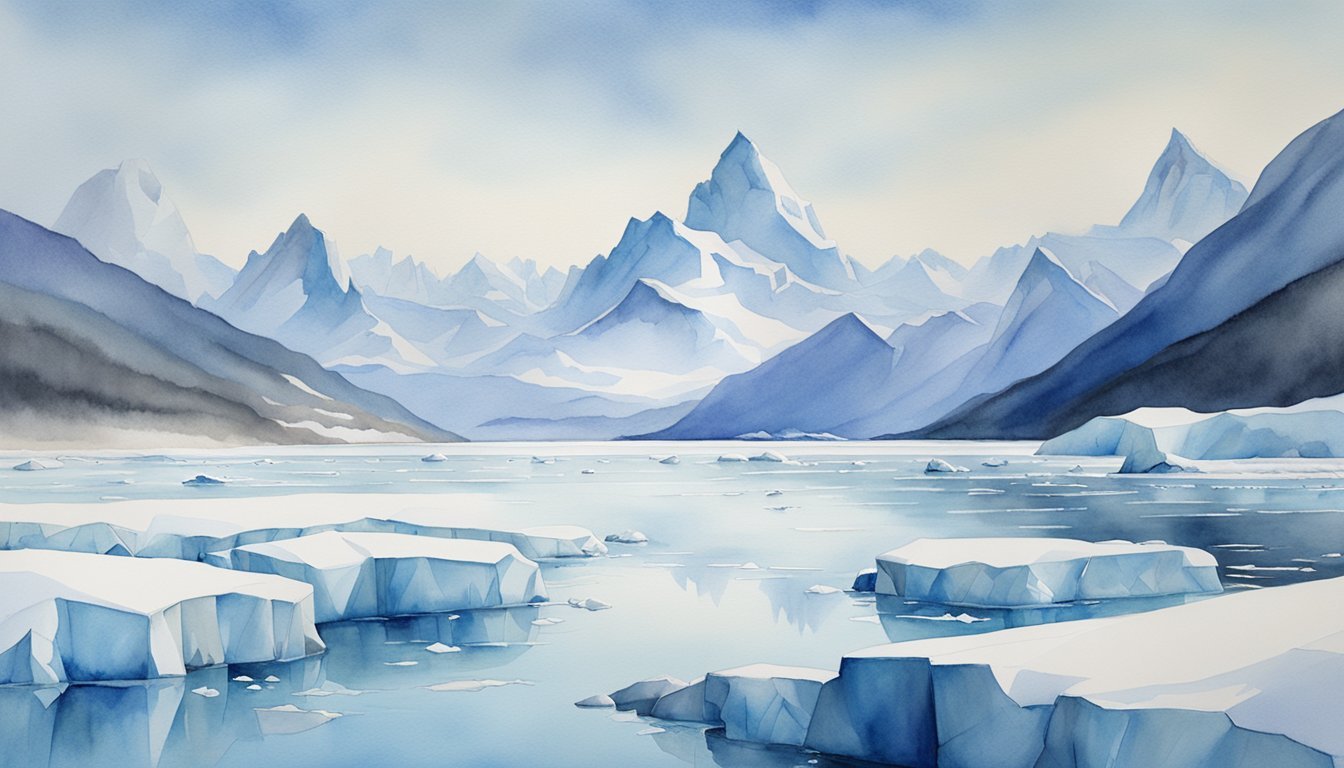Discovering the North Pole
The North Pole has been a focal point of exploration for centuries, with various expeditions braving the treacherous Arctic environment in pursuit of geographical achievements and scientific knowledge.
Historical Expeditions
The quest to discover the North Pole is storied with many daring voyages. British explorer William Edward Parry set out in the early 19th century but did not succeed in reaching the pole. Over time, explorers such as Norwegian Fridtjof Nansen and American Robert E. Peary undertook their own endeavors, with Peary claiming to have reached the pole in 1909, although his claim remains disputed.
Methods of Transportation
Early expeditions made use of ships and sleds, typically pulled by dogs, while later attempts introduced snowmobiles and airplanes. Historic achievements include the maiden voyage of the airship Norge, which flew over the Pole in 1926, and the journey of the USS Skate, the first submarine to surface at the pole, achieved in 1959.
Significant Geographic Discoveries
During the various expeditions, significant geographic features such as the Lomonosov Ridge—a subsea feature extending across the Arctic Ocean—were discovered, giving insight into the complex topography beneath the North Pole’s icy façade.
International Involvement
Throughout the years, nations such as Norway, Russia, Canada, and the United States have led numerous expeditions to the Arctic region. The Soviet Union’s achievements included the establishment of drifting ice stations, while Russia’s Arktika became the first surface ship to reach the pole in 1977.
Illuminating Figures
Many courageous individuals made their mark on polar exploration. Notably, Matthew Henson, an African American explorer who accompanied Peary, significantly contributed to the success of their expeditions. Ann Bancroft was the first woman to reach the North Pole on foot and by sled in 1986, and Ralph Plaisted reached the pole via snowmobile in 1968, which was the first undisputed over-ice arrival.
Guidance and Navigation
Navigating to the North Pole has always been a formidable challenge due to the variable positions of magnetic north and true north. Initially, explorers relied on celestial navigation, positioning themselves using the stars such as Polaris. Technological advancements have since led to more precise methods, with tools like GPS for exact latitude and longitude measurements, proving essential for modern explorers.
Environment and Climate

The North Pole serves as a critical barometer for environmental and climatic shifts, notable for its extreme conditions. It is also a unique habitat for a range of wildlife adapted to the polar climate.
Physical Characteristics
The North Pole is not a fixed landmass but is a point in the midst of the ever-shifting pack ice of the Arctic Ocean. The terrain here is formed by a layer of ice that ranges from 2 meters to more than 3 meters thick. This ice layer is in constant motion, influenced by the ocean underneath and the temperatures above.
Wildlife and Ecosystem
Despite the harsh conditions, the polar ecosystem supports diverse fauna such as polar bears, arctic foxes, and various species like the snow bunting. The Arctic Ocean teems with marine life including fish, shrimp, and a plethora of sea birds, all dependent on the presence of sea ice as a habitat and hunting ground.
Climate Patterns and Impact
A principal feature of the North Pole is the presence of polar day and night, with continuous daylight in the summer and darkness in the winter. This phenomenon impacts not only the weather but also the temperature patterns. Climate change is causing significant shifts, with warming at a faster rate than the rest of the planet, leading to reductions in sea ice and alterations in the Arctic ecosystem.
Study of Celestial Cycles
The North Pole’s role in celestial observation is paramount due to the absence of light pollution and its position under the North Star. Events such as the equinox are observed here with distinct clarity. Furthermore, the movement of Earth’s axis, including phenomena like the Chandler wobble, can be studied against the stable backdrop provided by the pole’s location.
Geopolitical Implications
The melting of pack ice at the North Pole is exposing potential shipping routes like the Northwest Passage and increasing geopolitical interest in the region. In 1958, the USS Nautilus made history by completing the first voyage beneath the polar ice cap, highlighting the strategic significance of the Arctic for navigational and resource-based endeavors.

